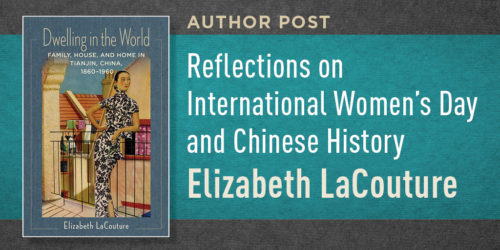The Complex Image of Empress Dowager Cixi of the Qing Empire Daniel Barish

“In Barish’s study of imperial education, Empress Dowager Cixi emerges as a skillful coalition builder, open to diverse policy stances, who participates in the global movement toward nationalizing monarchies. Learning to Rule offers readers a fresh, complex vision of Qing rule in its last decades.”
—Evelyn S. Rawski, author of The Last Emperors: A Social History of Qing Imperial Institutions
In the middle of the nineteenth century, two women ruled vast empires, each encompassing thousands of miles of diverse geographies, languages, cultures, and people. One, Queen Victoria, is often remembered in a glowing light, with her reign in many ways marking the zenith of the British Empire. But history has been less kind to the other, Empress Dowager Cixi of the Qing Empire. For years, Cixi has been tied to adjectives such as “conservative,” “reactionary,” and “xenophobic,” and her reign has been blamed for the demise of a once grand empire.
But where do these images come from? Why do we remember these two women in such divergent ways?
Women’s History Month is an opportune time to think more critically about these issues, particularly the sources and perspectives that both historians and popular writers have used over the years to construct our body of knowledge regarding Cixi. In many ways, what we find is that our image of Cixi is only part of the picture, and what we see relies heavily on the writings of her political enemies. These men infused their policy disagreements with Cixi with a larger gendered critique of her legitimacy, describing her as unfit to rule because she was a woman. They ascribed her political failings to supposed limitations of her gender.
But as a growing field of scholarship shows, the writings of those men are only a portion of the sources we have available, and their moments of disagreement with Cixi are not the only events of the era worthy of our attention.
What happens to our picture of Cixi when we include a broader range of perspectives, particularly the writings of other women who knew and admired her?
In in my book Learning to Rule: Court Education and the Remaking of the Qing State, 1861-1912, Cixi emerges from those sources as a pivotal figure in helping to stabilize the state after years of war. In this narrative, she is neither a hero nor a villain, neither savior of the nation nor saboteur of progress. Instead, when we move beyond the writings of her enemies, a more complex image of Cixi begins to emerge.
Using a combination of classical literacy, artistic production, promise of access to power, and violence, Cixi helped to build and sustain multiple coalitions at the imperial court.
Cixi arrived at the imperial palace in 1852 as a consort to the Xianfeng Emperor and soon gave birth to his only male heir. Over the next several decades, her stature and power grew as the country was nominally ruled by a series of young emperors. This was an era of great crisis for the Qing Empire as both natural disasters and frequent rebellions stretched the capacity of the central state. In seeking to restabilize the country, Cixi called on a broad array of scholars to present her with lectures on history and issues of governance, providing her with the knowledge and skills needed to help guide the state. Using a combination of classical literacy, artistic production, promise of access to power, and violence, Cixi helped to build and sustain multiple coalitions at the imperial court.
In those years, Cixi was commonly referred to by Chinese officials as a “female Yao or Shun,” placing the Empress Dowager in the pantheon of ancient sage rulers and depicting her as a diligent ruler.
The events of 1898 (suppressing a reform movement) and of 1900 (supporting the Boxer Uprising) changed that idea. Both at home and abroad, Cixi’s new enemies circulated a radically different image: no longer a sage, she was now depicted as the arch-nemesis of progress. In these critiques, the woman who had previously been described as “mother of the nation” was transformed into a caricature of sexist tropes, and the very presence of a woman at the center of power was seen as having a corrupting effect on the body politic. The American missionary W. A. P. Martin, for example, now wrote of Cixi, “She has been compared to Elizabeth of England and to Catherine of Russia, but, in my opinion, for her the fittest prototype is Jezebel of Samaria, who slaughtered the prophets of the Lord, and rioted with the priests of Baal.”
That image proved to have a powerful appeal, and more than a hundred years later, it still plays a large role in our descriptions of the time.
But is that all there is to the story?
While the writings of these women have long been available to historians, their opinions about Cixi have nonetheless been largely overshadowed by those of their male contemporaries.
Cixi, in fact, did not take the reversal of her reputation lightly. In an attempt to rebuild her image, she turned to new groups, notably the women of the foreign community in Beijing. Cixi hosted the women for both formal audiences and informal receptions. In these meetings, Cixi sought to present herself as a member of a global cohort of female rulers. She even hung steel engravings of Queen Victoria in the imperial palace, making sure visitors could not miss the connection.
The descriptions of Cixi by the women who attended these gatherings provide a marked contrast to the writings of her male critics from the era. In 1898 Sarah Conger, the wife an American diplomat, described Cixi as “bright and happy and her face glowed with good will. There was no trace of cruelty to be seen.” Still after the Boxers, Conger said of meeting with Cixi that she was “thoughtful, serious in every way. . . . Her face does not show marks of cruelty or severity.” The American painter Katherine Carl said that “the reports I had heard of Her Majesty’s hatred of foreigners had been dispelled by this first audience and what I had seen there.”
While the writings of these women have long been available to historians, their opinions about Cixi have nonetheless been largely overshadowed by those of their male contemporaries.
In the end, the truth of Cixi probably lies somewhere between the extreme descriptions of her as sagely or villainous. But the occasion of Women’s History Month ought to prompt us to more seriously consider why for so long it has mainly been the voice of the male critic that has been admitted into the archive when thinking about the Empress Dowager. Why have we discarded the perspective of her female allies in our studies of her era?
Learning to Rule explores many of these issues, raising questions not just about the role that women played in China’s history but also about the ways in which we construct narratives of the past and the implicit biases of our standard archives and histories.
Daniel Barish is assistant professor of history at Baylor University and the author of Learning to Rule: Court Education and the Remaking of the Qing State, 1861–1912.









1 Response